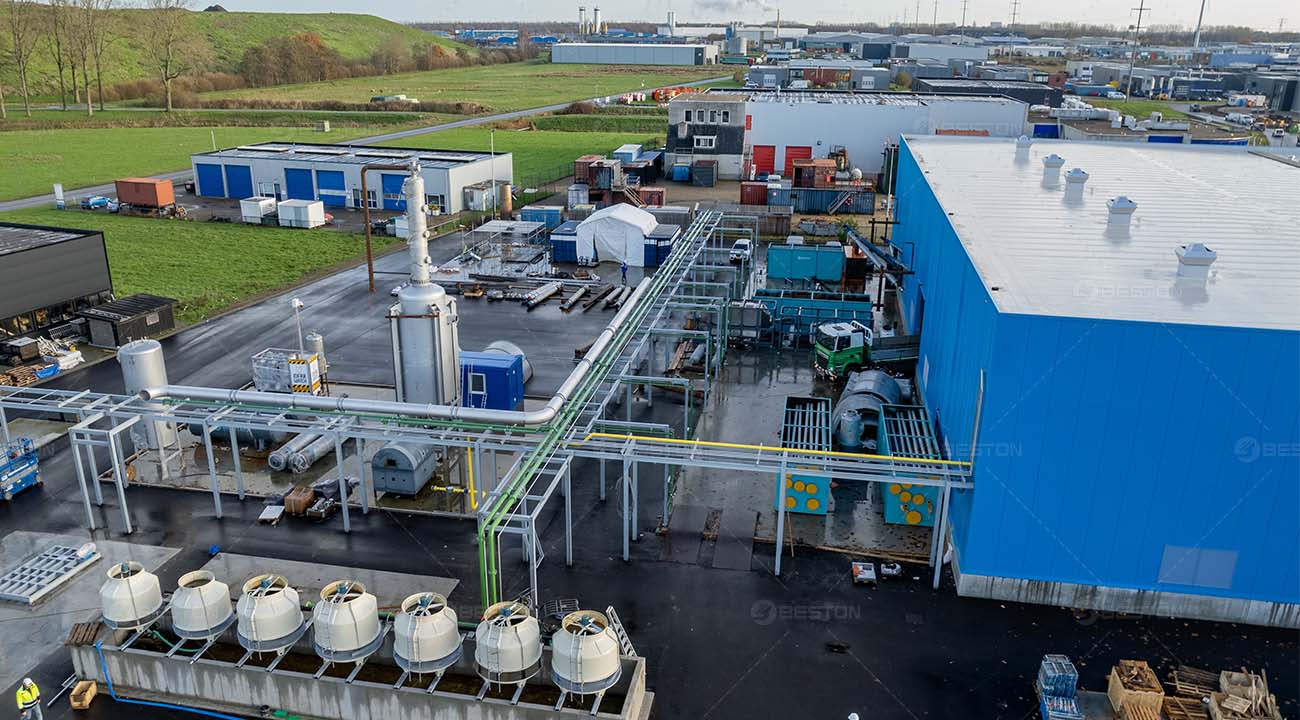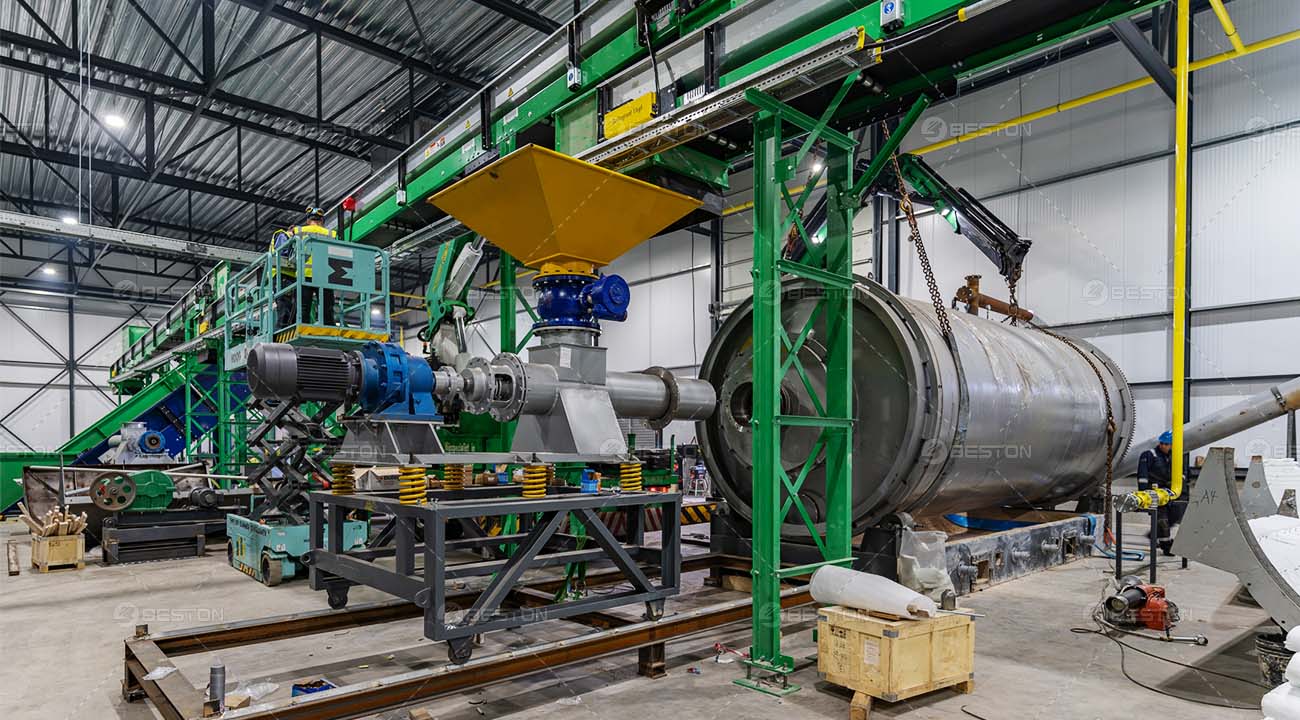The Promise of Plastic Pyrolysis for Sustainable Waste Management
Understanding Plastic Pyrolysis
In today’s era of environmental consciousness, plastic pyrolysis has emerged as a promising solution to address the pressing issue of plastic waste management. Pyrolysis is a process that involves the thermal decomposition of plastic waste in the absence of oxygen, transforming it into valuable resources such as fuel oil, carbon black, and gas. As industries and governments seek sustainable ways to manage plastic waste, finding the most suitable plastic pyrolysis plant becomes crucial.
Importance of Selecting the Right Pyrolysis Plant
Selecting the right plastic pyrolysis plant is essential to ensure efficient and eco-friendly conversion of plastic waste into useful products. An ill-suited plant can lead to suboptimal performance, increased maintenance costs, and even potential environmental hazards. To make an informed decision, several key aspects must be carefully evaluated.

Assessing Feedstock and Throughput Requirements
Identifying the Type of Plastic Waste
The first step in finding the most suitable plastic pyrolysis plant is to assess the type of plastic waste available. Different plastics have varying chemical compositions and properties, which can influence the pyrolysis process and the quality of the end products. Some pyrolysis plants may be specifically designed to handle certain types of plastics, while others offer versatility in processing various plastic waste streams.
Estimating Daily Throughput
Accurately estimating the daily throughput is essential for determining the capacity required from the plant. This is influenced by the scale of plastic waste generation and the intended production capacity of valuable products. Underestimating throughput can lead to bottlenecks and operational inefficiencies, while overestimating may result in excessive investment costs.
Evaluating Pyrolysis Plant Designs and Technologies
Batch vs. Continuous Pyrolysis Systems
Pyrolysis plants come in two main configurations: batch and continuous systems. Batch systems are suitable for small-scale operations, where a limited amount of plastic waste is processed intermittently. On the other hand, continuous pyrolysis plants allow for a steady feed of plastic waste, making them ideal for larger operations with higher throughput requirements. Each has its pros and cons, and the choice depends on the specific needs of the business.
Different Pyrolysis Reactor Configurations
The pyrolysis reactor is the heart of the plant, and its design significantly impacts the efficiency and quality of the pyrolysis process. Common reactor configurations include rotary, fixed-bed, fluidized bed, and screw pyrolysis reactors. Each design has distinct advantages and disadvantages in terms of heat transfer, reaction time, and product yield.
Energy Efficiency and Heat Management
Effective heat management is critical for maintaining the pyrolysis temperature and maximizing energy efficiency. Some advanced pyrolysis plants incorporate heat exchangers and recycling systems to optimize energy consumption. Evaluating the heat management capabilities of a plant can significantly impact operational costs and environmental sustainability.

Analyzing Environmental Compliance and Safety Features
Emission Control Systems
Environmental regulations demand strict emission controls to minimize the release of harmful pollutants during the pyrolysis process. An ideal pyrolysis plant should be equipped with efficient emission control systems, such as scrubbers, filters, and condensers, to ensure compliance with local and international environmental standards.
Safety Protocols and Automation
Safety is of paramount importance in operating a pyrolysis plant, as the process involves high temperatures and potentially hazardous materials. Automation systems can enhance safety by reducing human intervention and the risk of errors. Safety features like alarms, emergency shutdown mechanisms, and fire suppression systems must be thoroughly evaluated.
Waste Treatment and Disposal
While pyrolysis offers a greener alternative to traditional waste disposal methods, there may still be some byproducts and residues to manage responsibly. A suitable thermal desorption unit should include waste treatment and disposal mechanisms to handle any leftover materials or contaminants in an eco-friendly manner.
Considering Scalability and Footprint
Available Space for the Plant
The physical space available for the pyrolysis plant is a crucial consideration, especially for businesses operating within limited areas. Compact plant designs and modular configurations can be beneficial in optimizing space utilization while allowing for potential future expansions.
Future Expansion Plans
Considering the potential for future expansion is essential for long-term sustainability. Businesses should assess whether the selected plant model allows for easy scalability to meet growing demands or whether it necessitates significant modifications or replacements to accommodate increased throughput.
Calculating Overall Costs and Return on Investment (ROI)
Initial Investment and Operational Expenses
Investing in a plastic pyrolysis plant involves both upfront capital costs and ongoing operational expenses. These include procurement costs, installation, labor, raw material acquisition, energy consumption, and maintenance. A comprehensive financial analysis helps in understanding the overall costs involved in the project.
ROI Assessment and Payback Period
Determining the return on investment (ROI) is vital to ascertain the financial viability of the venture. The payback period—the time required to recoup the initial investment—is a crucial metric for evaluating the project’s profitability. Calculating the ROI helps make informed decisions regarding funding and potential financing options.
Researching Manufacturer Reputation and After-Sales Support
Checking Manufacturer’s Track Record
The reputation and track record of the pyrolysis plant manufacturer play a significant role in ensuring the plant’s quality and performance. Researching the manufacturer’s history, customer reviews, and testimonials can provide valuable insights into their credibility.
Warranty, Maintenance, and Technical Support
A reliable manufacturer should offer a comprehensive warranty, regular maintenance plans, and prompt technical support to address any issues that may arise during the plant’s operation. Clear communication channels and responsive customer service are vital for uninterrupted plant performance.
Therefore, if you want to obtain reliable equipment, you must find a manufacturer with advanced technology. Beston Group has been working on researching green pyrolysis machines. Get more information at https://bestonasia.com/
Choosing the Right Plastic Pyrolysis Plant for a Greener Future
Selecting the most suitable plastic pyrolysis plant is a complex process that demands careful consideration of various technical, environmental, and financial factors. By evaluating the feedstock requirements, plant design, safety features, scalability, costs, and manufacturer’s reputation, businesses can make informed choices that align with their sustainability goals and operational needs. A well-chosen pyrolysis plant sets the foundation for efficient plastic waste management, contributing to a cleaner environment and a greener future.
